10 Wild Flowers That Grow in Louisiana: Identification Guide (With Pictures)
-
Brooke Bundy
- Last updated:
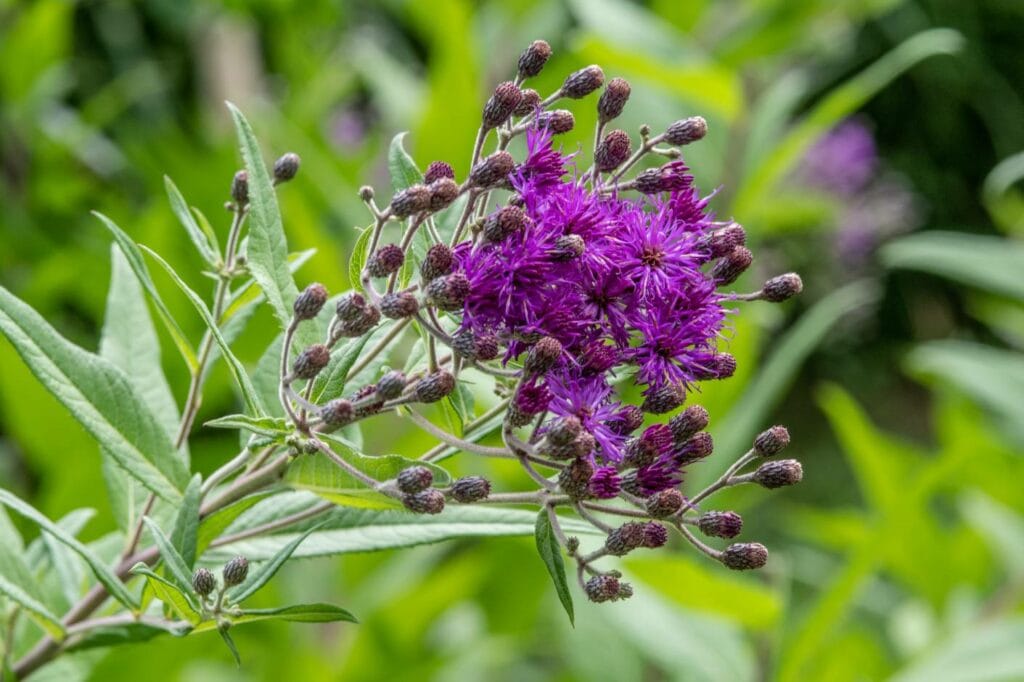
Whether you’re a roadside wildflower connoisseur, a meadow forager, or an avid gardener, wildflowers are fascinating sights to behold in the Bayou State. You can grow or spot any of the flowers on our list in Louisiana depending on the time of year and the soil conditions. If you’re looking to grow your own, you’ll be happy to know that wildflowers are among the easiest types of plants to grow. After all, they’re commonly labeled “weeds,” which means they often blossom in areas where they aren’t welcome. Of course, just because something is labeled a weed doesn’t mean it’s ugly. In contrast, some people prefer the simple natural beauty of the wildflower to the perfectly manicured rose. Let’s look at the different types of wildflowers in Louisiana, and you can take your pick.
 What Grows in Louisiana?
What Grows in Louisiana?
Unlike people, who must be born in a certain area to be considered a native, plants need only to survive and thrive in a region for a long period of time. Thus, a native Louisianan plant may not originate from the state, but it’s been growing here for thousands of years, which counts as native for classification purposes. Most of the wildflowers on our list are classified as native to the Bayou State, which means that they’ll generally tolerate a variety of undesirable conditions because they are well-acclimated to the area. You can plant the seeds year-round since Louisiana has a fairly temperate climate. However, you’re more likely to have spring flowers if you plant in the fall.
If you’re plotting to add any other wildflowers to your garden, you should know that Louisiana is in USDA zones 8-9. The southernmost part of the state is actually considered to have a sub-tropical climate, which means you can even grow citrus trees and tropical plants outdoors, where they may only be able to be grown as indoor houseplants in other parts of the United States. The warmer planting zone gives you a wide range of creative freedom for the most part. However, some cool-weather wildflowers such as English lavender won’t thrive here because it tends to be boggy and hot.
Soil conditions are one of the biggest challenges you’ll likely face when growing wildflowers in Louisiana, especially if you’re not native to the region. Different parts of the state have drastically different soils, whether you’re in the northern part of the state at a higher elevation with well-draining soil, or down south where marsh conditions create soggy soil. Research your particular region before planting to see what wildflowers will really thrive there.
The 10 Wild Flowers That Grow in Louisiana State
1. Tall Ironweed (Vernonia altissima)
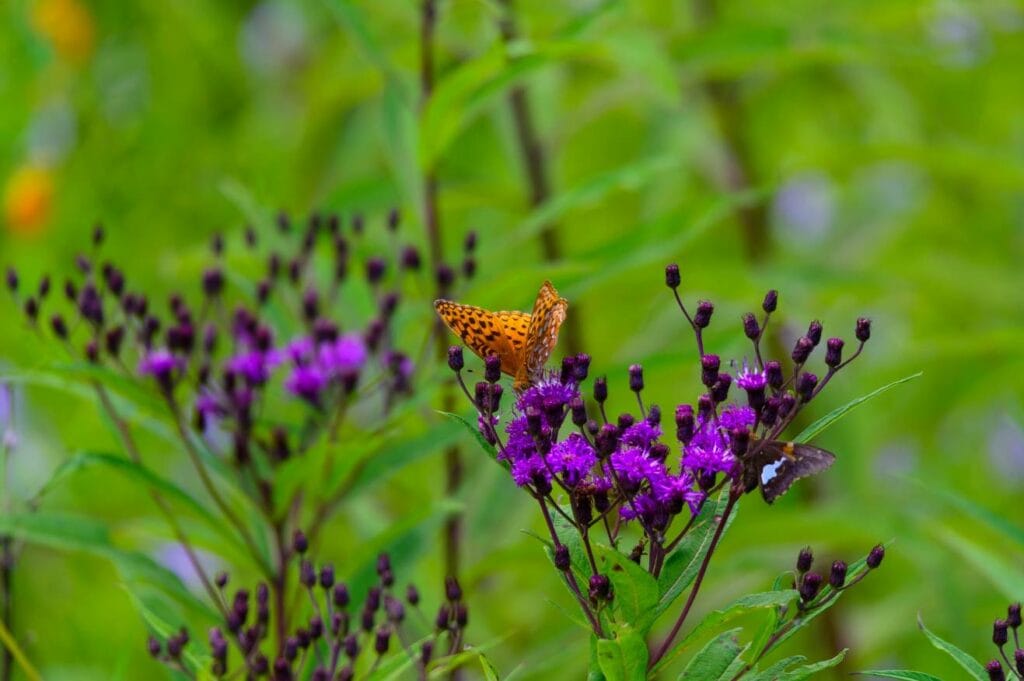
| Ideal Soil Conditions: | Moist |
| Blooming Season: | August-October |
| Type: | Perennial |
Tall Ironweed towers over other wildflowers with its 5-8 ft. stalk. With its 3-6 ft. spread, this majestic flower establishes its territory in marshes or other moist environments. It produces abundant clusters of purple flowers every autumn during all the years of its reign.
2. Goldenrod (Solidago sp.)

| Ideal Soil Conditions: | Well-drained |
| Blooming Season: | Summer through fall |
| Type: | Perennial |
Often blamed as the culprit for seasonal allergies, Goldenrod is actually quite innocent. Another plant, Ragweed, blooms around the same time and causes watery eyes and sneezing. The only thing Goldenrod supplies is bright yellow flowers and fresh food for bees. Being an invasive species, Goldenrod will grow almost anywhere in Louisiana as long as the soil is well-draining.
3. Narrowleaf Sunflower (Helianthus angustifolius)
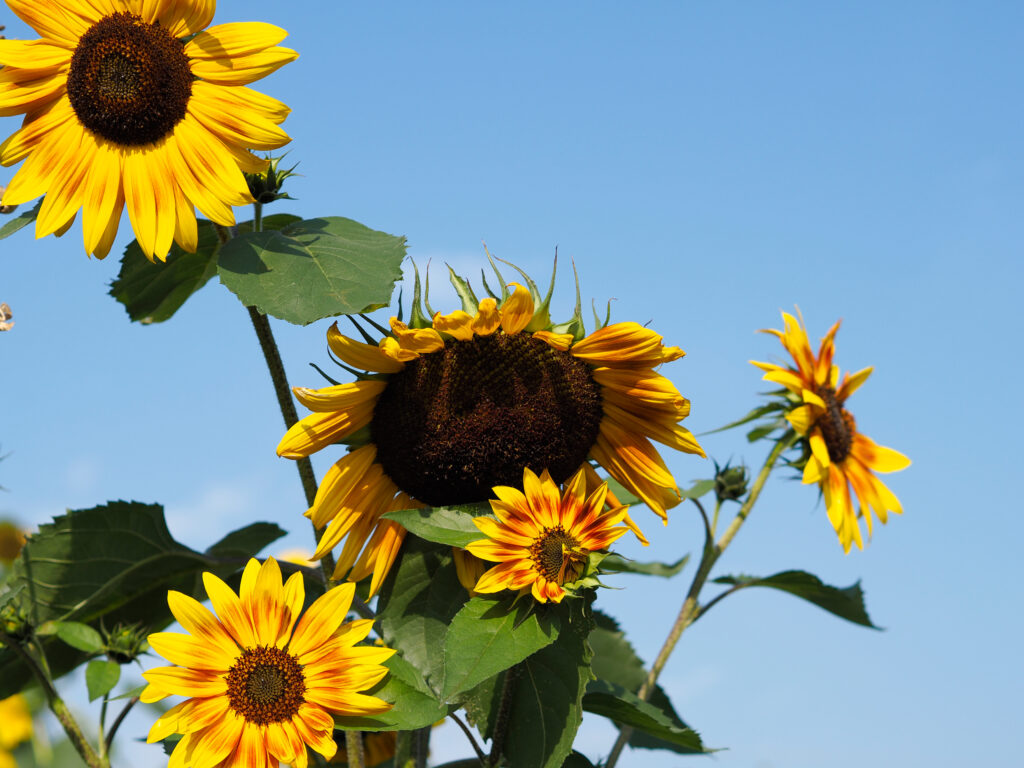
| Ideal Soil Conditions: | Moist |
| Blooming Season: | Late summer to mid-autumn |
| Type: | Perennial |
The narrowleaf sunflower, or swamp sunflower as it is popularly nicknamed, flourishes in the Bayou State during the late summer to mid-autumn. You’ll find several species of sunflowers here, but this one is the most adapted to this area. Unlike most sunflowers, this species is a perennial, so it’ll bloom in your garden year after year with minimal effort. Its timid, 2-inch blossoms are yellow with a dark center, resembling a Black-eyed Susan more than a regular sunflower because of its small size.
4. Asters (Asters sp.)
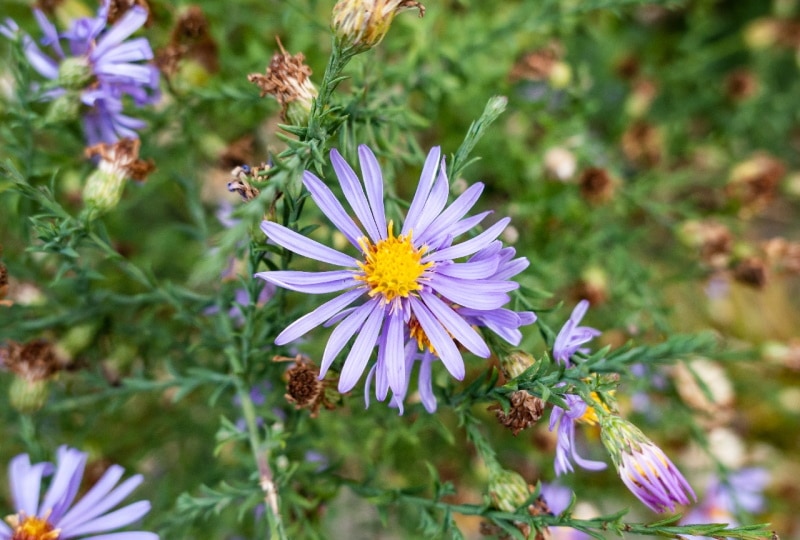
| Ideal Soil Conditions: | Moist, well-drained |
| Blooming Season: | Late summer through fall |
| Type: | Perennial |
Asters come in a variety of species with pink, white, or purple flowers. Their name is derived from the Greek word for “star,” which is the shape of their blooms. They’re widespread across the United States and will blossom despite harsh climates on one condition: they need well-draining, moist soil to survive. A dense, packed clay soil will choke out the roots.
5. Lavender (Lavandula stoechas)
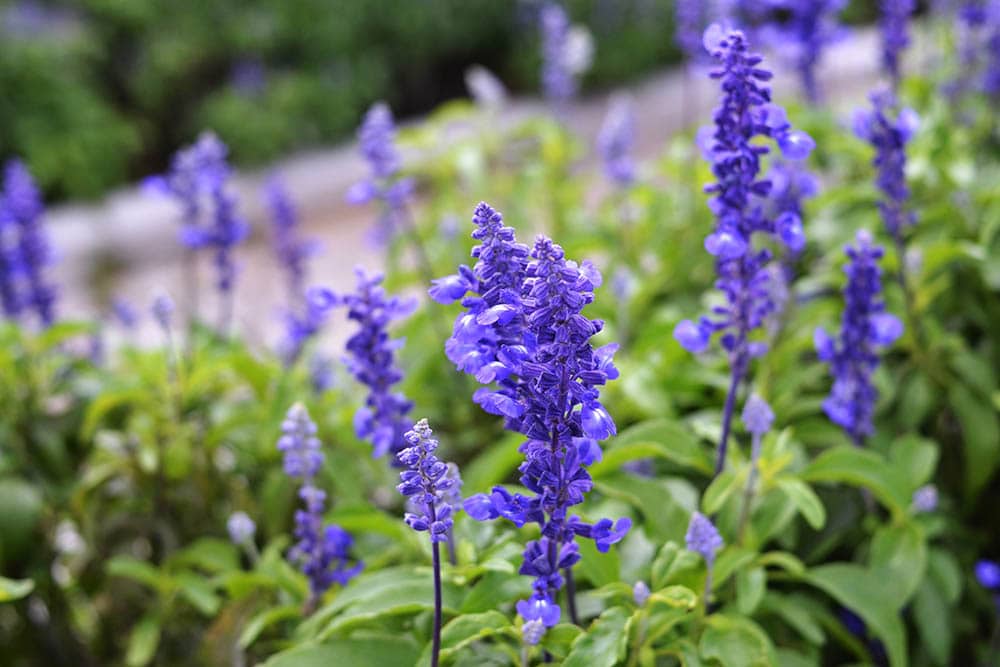
| Ideal Soil Conditions: | Well-draining |
| Blooming Season: | Summer through fall |
| Type: | Perennial |
Hailing from the Mediterranean, Spanish and French Lavenders are best suited for Louisiana’s hot and humid climate. You won’t find any tall English Lavender here, because that species only grows in cooler weather. However, you can’t simply plop a French or Spanish lavender plant into the ground and expect it to survive. All types of lavender are extremely susceptible to root rot and require well-draining soil. You may not need to water it at all unless there’s a severe drought since the atmosphere in Louisiana is so humid. Lavender grows best in a rock garden or gravel where its roots can receive plenty of circulation.
6. Butterweed (Senecio glabellus)
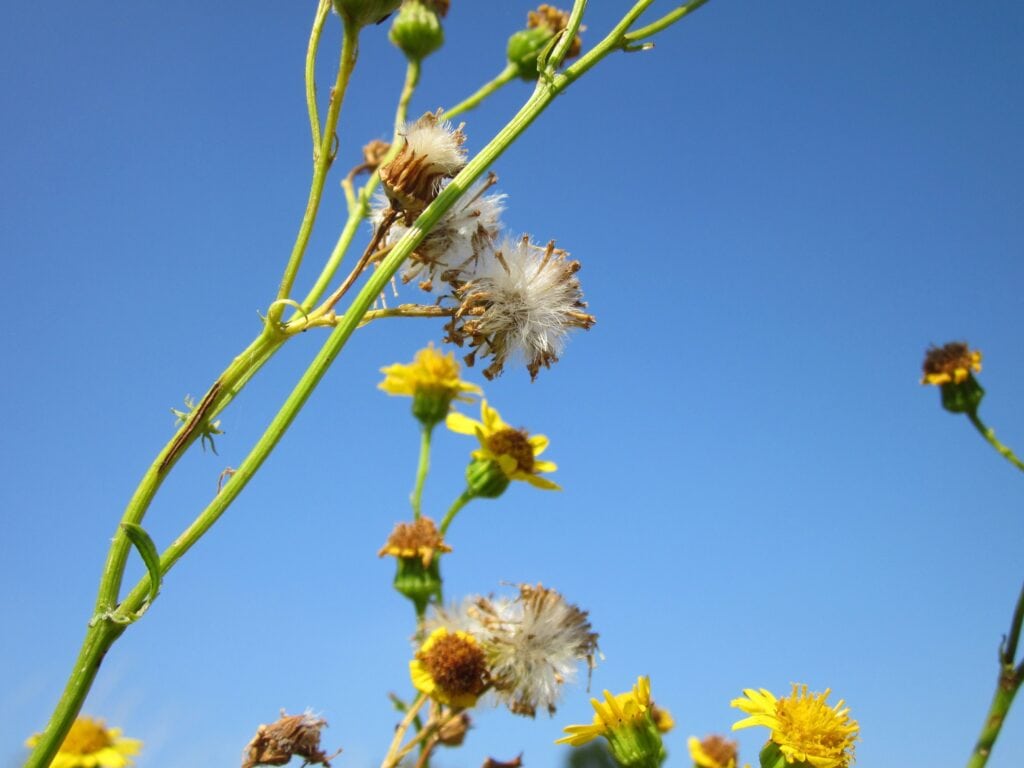
| Ideal Soil Conditions: | Moist |
| Blooming Season: | Early to mid-spring |
| Type: | Annual |
Clusters of sunshine yellow flowers with a golden center adorn this common plant. Butterweed grows up to 2 ft. tall but doesn’t linger for long. Once the heat of summer hits, it quickly fades.
7. Mexican Primrose (Denothera speciosa)
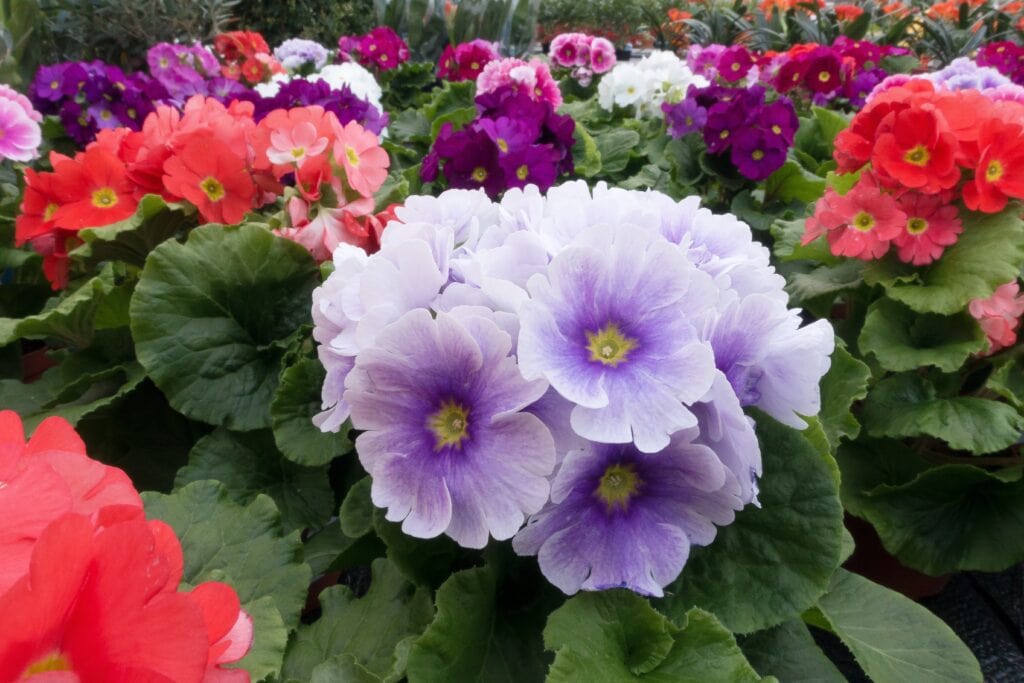
| Ideal Soil Conditions: | Dry |
| Blooming Season: | Late March through May |
| Type: | Perennial |
You might just as easily see the Mexican Primrose peeking through sidewalk cracks as you would find it flourishing in a field. This wildflower has circular pink flowers with a delicate white center and looks similar to a petunia.
8. Dandelion (Taraxacum officinale)
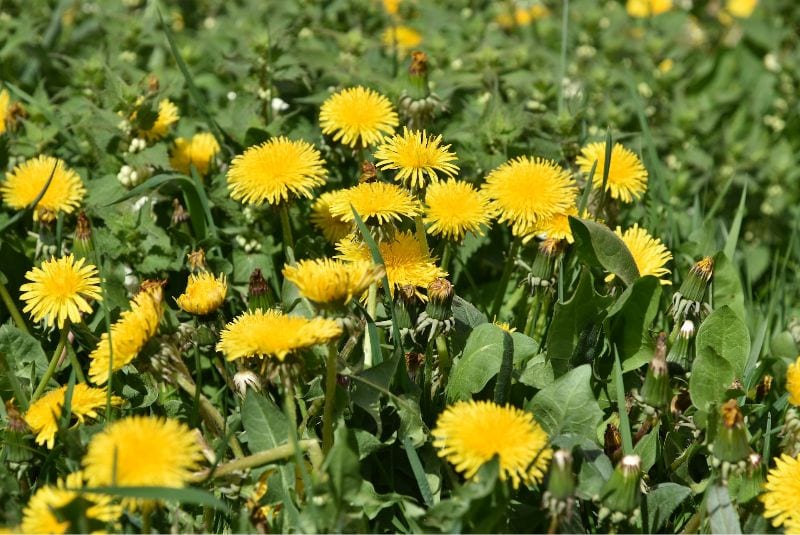
| Ideal Soil Conditions: | Grows in almost any conditions |
| Blooming Season: | April through September |
| Type: | Perennial |
Adults see dandelions as weeds, but children fondly use them to make a wish. The seeds grow in bunches after the yellow flowers are finished. Almost every part of the dandelion is edible, and it’s believed to have some health benefits, such as helping the body detox.
9. Daisy Fleabane (Erigeron philadelphicus)
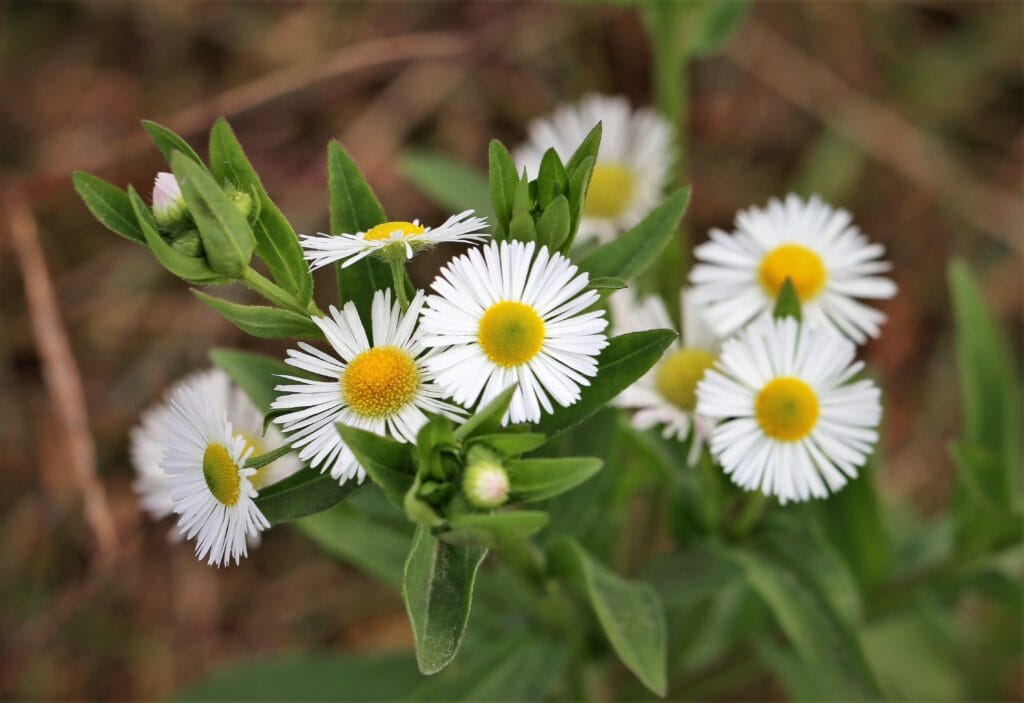
| Ideal Soil Conditions: | Fertile soil |
| Blooming Season: | March through June |
| Type: | Annual or biennial |
You’ll most likely see this herb in a field or meadow. The thin white or pink petals surround a yellow center and look similar to a daisy, but the flower is smaller and more delicate.
10. Purple Coneflower (Echinacea purpurea)
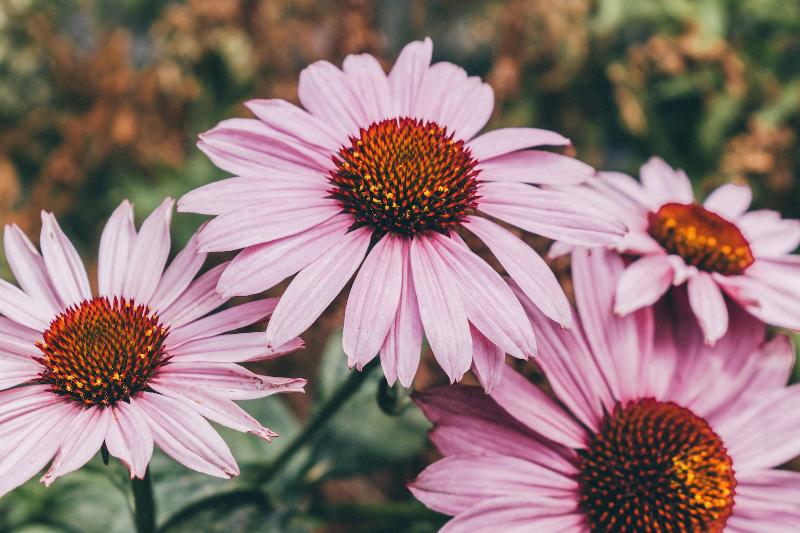
| Ideal Soil Conditions: | Dry, well-drained soil |
| Blooming Season: | April through September |
| Type: | Perennial |
Whether you’re wanting to grow this flower or you’re just hoping to spot it on the hillside, you should know that Purple Coneflower prefers dry soil. You’ll likely find it in a meadow or field rather than a marsh or somewhere with packed, clay soil. Purple Coneflower actually contains some medicinal properties that help the body fight bacterial infections, and some people like to drink it as tea.
 Conclusion
Conclusion
Louisiana is home to many native wildflowers that grow in a variety of conditions. If you’re cruising through the countryside, or even riding through town, you’ll likely spot a few while you’re out. Since Louisiana has a fairly temperate climate, you can plant wildflower seeds year-round, but it’s best to plant them in the fall if you want flowers in the spring.
Featured Image Credit: Julian Popov, shutterstock
Contents
 What Grows in Louisiana?
What Grows in Louisiana?